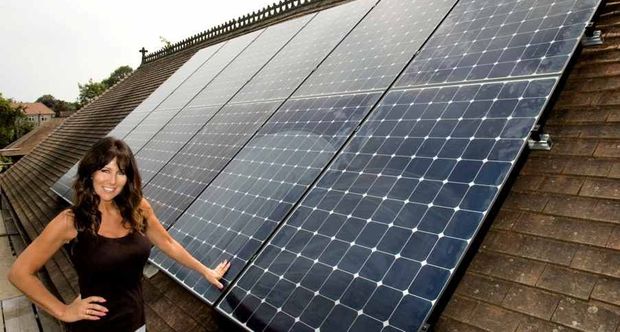Alternate Titles and Related Care

-
Solar Field Service Technician
-
Solar Installation Technician Commercial
These two jobs are “Bright Outlook” and “Green New and Emerging” occupations in the renewable energy generation sector of the economy.
Job Trends
The statistics are based on the Bureau of Labor’s category of “Construction and Related Workers, All Other,” which projects an average growth rate of 7 to 13 percent for this category between 2008 and monitoring system components; and 2018. This translates into 26,600 new employees overall. However, as a “Bright Outlook” occupation in the renewable energy sector, the solar thermal installer and technician jobs may require more workers more quickly than anticipated.
Nature of the Work
Solar thermal installers install energy systems designed to collect, store, and circulate solar-heated water for residential, commercial, or industrial use. Solar thermal technicians repair these systems.
Both occupations deal with piping, water heaters, valves, tanks, pipefittings, and auxiliary equipment. Solar thermal installers and technicians work with soldering equipment, pipe cutters, acetylene torches, wire brushes, sand cloths, plastic glue, brackets, and struts. They have to be able to read manufacturer specifications as well as flow meters and temperature and pressure gauges.
According to O’NET, solar thermal installers may perform the following tasks:
-
Design active direct or indirect, passive direct or indirect, or pool solar systems
-
Apply operation or identification tags or labels to system components, as required
- Assess collector sites to ensure structural integrity of potential mounting surfaces or the best orientation and tilt for solar collectors
- Connect water heaters and storage tanks to power and water sources
- Determine locations for installing solar subsystem components
- Fill water tanks and check for leaks
-
Identify’ plumbing, electrical, environmental, or safety hazards associated with solar thermal installations
-
Install circulating pumps; copper or plastic plumbing; flat-plat, evacuated glass, or concentrating solar collectors; heat exchangers and heat exchanger fluids; plumbing
-
Install solar collector mounting devices oh tile, asphalt, shingle, or built-up gravel roofs, using appropriate materials and penetration methods
-
Install solar thermal system controllers and sensors
-
Test operation or functionality of mechanical, plumbing, electrical, and control systems
-
Apply ultraviolet radiation protection to prevent degradation of plumbing
-
Apply weather seal, such as pipe flashings and sealants, to roof penetrations and structural devices
-
Cut, miter, and glue piping insulation to insulate plumbing pipes and fittings